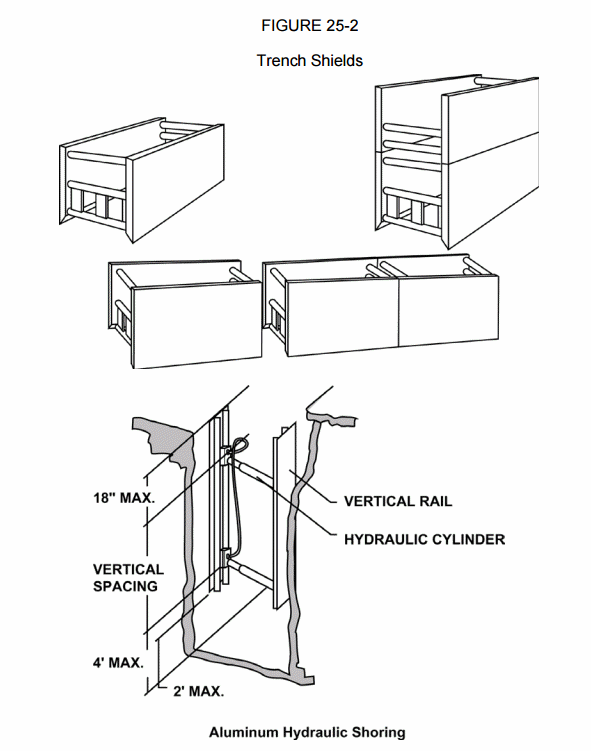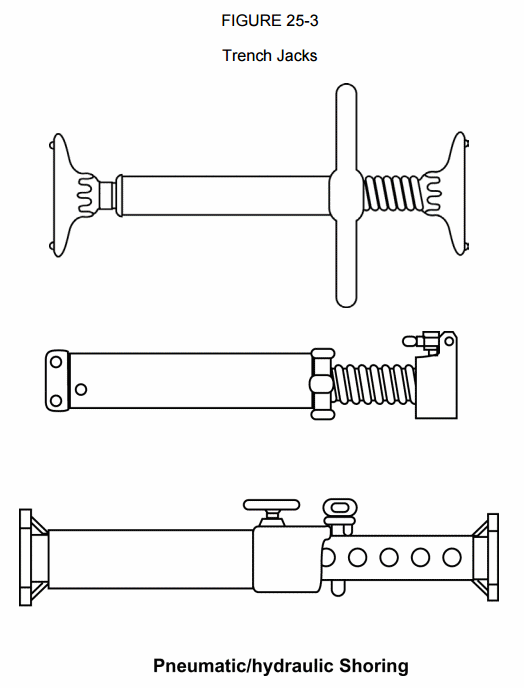25.D.04 Shield systems.
- Shield systems must not be subjected to loads exceeding those that the system was designed to withstand.
- Shields must be installed in a manner to restrict lateral or other hazardous movement of the shield in the event of the application of sudden lateral loads.
- Employees must be protected from the hazard of cave-ins when entering or exiting the area protected by shields.
- Employees must not be allowed in shields when shields are being installed, removed, or moved vertically.
- For shield systems used in trench excavations: excavations of earth material to a level not greater than 2 ft (.6 m) below the bottom of the shield must be permitted, only if the shield is designed to resist the forces calculated for the full depth of the trench, and there is no indications while the trench is open of a possible loss of soil from behind or below the bottom of the shield.
25.D.05 Additional requirements for trenching.
- Installation of support systems must be closely coordinated with excavations of trenches.
- Bracing or shoring of trenches must be carried along with the excavation.
- Backfilling and removal of trench supports should progress together from the bottom of the trench. Jacks or braces must be released slowly and, in unstable soil, ropes must be used to pull out the jacks or braces from above after personnel have cleared the trench. > See Figure 25-3.
- Excavation of material to a level no greater than 2 ft (0.6 m) below the bottom of the members of a trench support system (including a shield) must be permitted, only if the system is designed to resist the forces calculated for the full depth of the trench and there are no indications while the trench is open of a possible loss of soil from behind or below the bottom of the support system.
25.E Cofferdams.
Constructing a Cofferdam
25.E.01 If overtopping of the cofferdams by high water is possible, design must include provisions for controlled flooding of the work area.
25.E.02 If personnel or equipment are required or permitted on cofferdams, standard railings, or equivalent protection, must be provided.
25.E.03 Walkways, bridges, or ramps with at least two means of rapid exit, with standard guardrails (as defined in Section 21.F.01), must be provided for personnel and equipment working on cofferdams.
25.E.04 A plan (including warning signals) for evacuation of personnel and equipment in case of emergency and for controlled flooding must be developed and posted.
25.E.05 Cofferdams located close to navigable shipping channels must be protected from vessels in transit.
Knowledge Check Choose the best answer for the question.
25-9. Which trenching procedure would be considered unsafe?
You forgot to answer the question!


